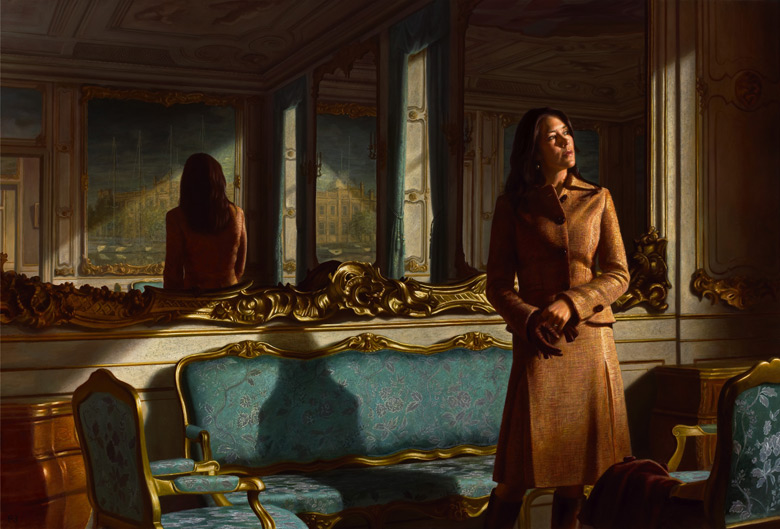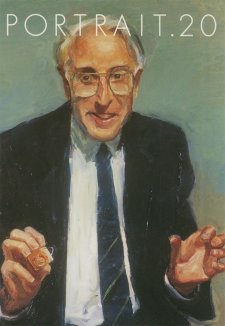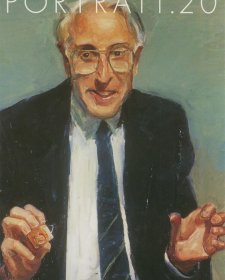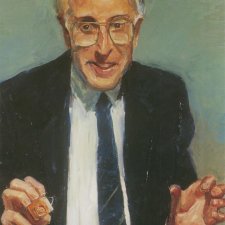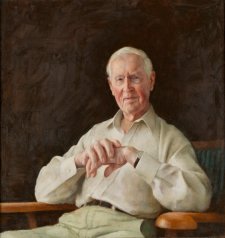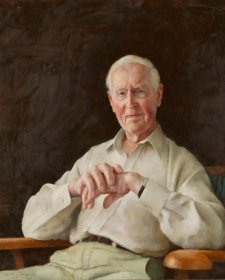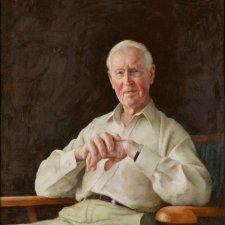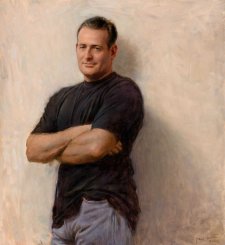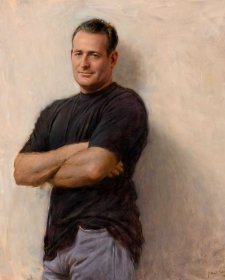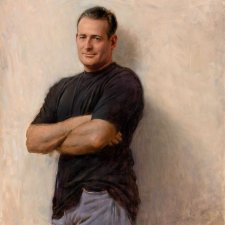Australian-born, Paris-based artist Ralph Heimans was commissioned to paint the first state portrait of Her Royal Highness, Princess Mary of Denmark. Heimans' portrait is the Danish counterpart to the portrait of Princess Mary which was commissioned from Sydney artist Jiawei Shen by Australia's National Portrait Gallery. Heimans' painting, measuring 2.5 metres by 1.75 metres, depicts the princess amongst the Rococo glory of the 17th century Frederiksborg Castle, north of Copenhagen.
'The unveiling of the portrait was such a wonderful event. The whole thing was almost like a dream. I pinch myself to make sure it actually did happen. Firstly, everything went so smoothly. The sun shone out as the princess stepped out of the car. The timing was perfect, like a film. Paparazzi were there clicking away and then as she walked into the hall there was this silence and we all stood up. It was just fantastic, the sort of radiance she had.
'The very first word I heard from the commission I think came from Andrew Sayers. I had just seen him for lunch about a week or two ago before in Canberra at Justice Kirby's chambers. He had asked me some time earlier to submit an idea - to be part of a shortlist of artists. The whole process took a long time and I was starting to think that it wasn't going to happen for me. I thought they had made some other choice. Then some time after the lunch, Andrew called me and said, 'You've been chosen".
'For me drawing is an essential part of the process. I do an enormous amount of planning of my paintings and the planning of this painting was more than extensive. I've never done a painting with so much preparation. On the one hand it's the largest work I've ever tackled, but also the most ambitious commission by far. Many of the creative decisions were made in close contact with the Frederiksborg Museum and there was a lot of to-ing and fro-ing and sharing of ideas. The process took most of six months just to come up with the ideas, and they underwent many changes in different phases. A couple of the curators from the museum were also giving me advice on historical input, but obviously they chose an Australian artist because they wanted something of Mary's Australian background.
'When I started this painting I wanted to enrich the painting with sort of historical references. And I was really trying to be faithful to my 'impression' from the very first time I met the princess - and that was in May (2005). It was the impression of a very strong, confident and professional person and, yet, it's all wrapped up with the fairy tale obviously that's associated with her, and her world at the palace. So I was trying to express all that in a pose, in what she might be wearing, in a context, in an action, I mean, all these things went through my mind and that's something I grappled with for a period of a good six months. It is only really when you start putting it down on canvas that you really start to see what works and what doesn't. Even on canvas the painting went a different way.
'My portrait is informal rather than regal in the traditional sense. On my first day in the Denmark Portrait Gallery Director Mette Skougaard made it very clear that the museum wanted something informal. She also enjoyed the narrative aspect in my work. Which is a recurring theme in all my portraits, as though there was sort of a puzzle to piece together or the life story of the sitter somehow explained through the painting, That approach really does lend itself to an informal painting. And they've got very formal portraits of their monarchs and this is for the contemporary section of the museum, I guess they wanted something slightly different.
'Mary was an ideal sitter. There was an Australianess about her obviously, which put me at ease immediately, but she does have a very strong regal presence. So there's a familiarity and yet there's a certain ... status about her. In a way all of that had to come through in the painting We had this very easy rapport and she was a fantastic sitter. She was extremely cooperative. She basically took a background role as, the creative decisions, as I said earlier, were really made with the museum and all she requested was to have a look at how the working drawings were progressing. I guess in a way she was the subject and not the commissioner.
'The original aim of the painting was to express something of the young Australian bride really The commission came about before the pregnancy was announced and because of this image of her as being out of the mould of Danish royalty -something fresh and new - it was very befitting to have an informal image of Mary. Throughout the process the pregnancy was happening of course and I guess that may have lengthened the process a little because there was a period there where she couldn't pose.
'I see myself very much as a contemporary portrait artist in the context of a real renewal of interest in portraiture. I am inspired of course by current trends but I've also tried to take my expression directly from the source - the old masters. One of the reasons why I'm here (in Europe) is to be close to that kind of influence. I love painters like Caravaggio and Rembrandt, yet I try to infuse that influence with subjects drawn from the contemporary world. The inspiration from the old masters is really only on the level of technique and use of Ight. I think that the Australian component is an element of humour, an element of playfulness, or sometimes a quirkiness in the paintings. I try to challenge the boundaries of what portraiture is in a number of ways, including the use of narrative. I guess one of the first ones in which I really made a personal breakthrough was with the painting of Justice Kirby in the National Portrait Gallery collection.
'As to what next, I'm trying to cook up some interesting projects basically. Many of them involve Australia and so my next thing is a trip to Australia, coming up in June this year. I've got a portrait that's ongoing of a professor of dermatology for the University of Melbourne. I have a commission to finish off in London and there are a couple in New York as well. I've got stuff to do but I'm looking for the exciting sequel to this one.'
